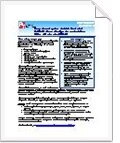Principled Technologies (PT) compared the system administration tasks of the Dell™ Unified Server Configurator (USC) version 1.3 to HP™ SmartStart® version 8.30 x64. PT compared the following eight system management operations on the Dell PowerEdge™ R710 and the HP ProLiant™ DL380 G6:
- Pre-OS deployment
- Windows Server® 2008 R2 deployment
- Updating the BIOS
- Rolling back the BIOS
- Configuring BIOS and network interface card (NIC) options
- Configuring RAID 5 (outside OS installation)
- Loading diagnostics
- Flashing the firmware for a replacement part
The Dell PowerEdge R710 was enabled by the Dell USC through a single interface for firmware and other updates, hardware configuration, RAID management, native deployment of supporting operating systems, and system diagnostics. All tasks were performed through the Dell USC. Because the Dell USC is on an embedded processor, no CDs were necessary, no recovery partition was required and system management tasks could not be compromised by disk drive failure.
For the HP ProLiant DL380 G6, four utilities were used to complete the tested system management tasks. The main utility that was used, the HP SmartStart, is a CD-based utility that could not execute all management tasks. The ROM-Based Setup Utility (RBSU), two different ROMPaq bootable USB drives and the HP Firmware Maintenance v8.70 CD were additional utilities needed to perform the system management tasks.
In this report, read the detailed results and descriptions of the testing procedures involved in the comparison of Dell and HP system administration tasks.
